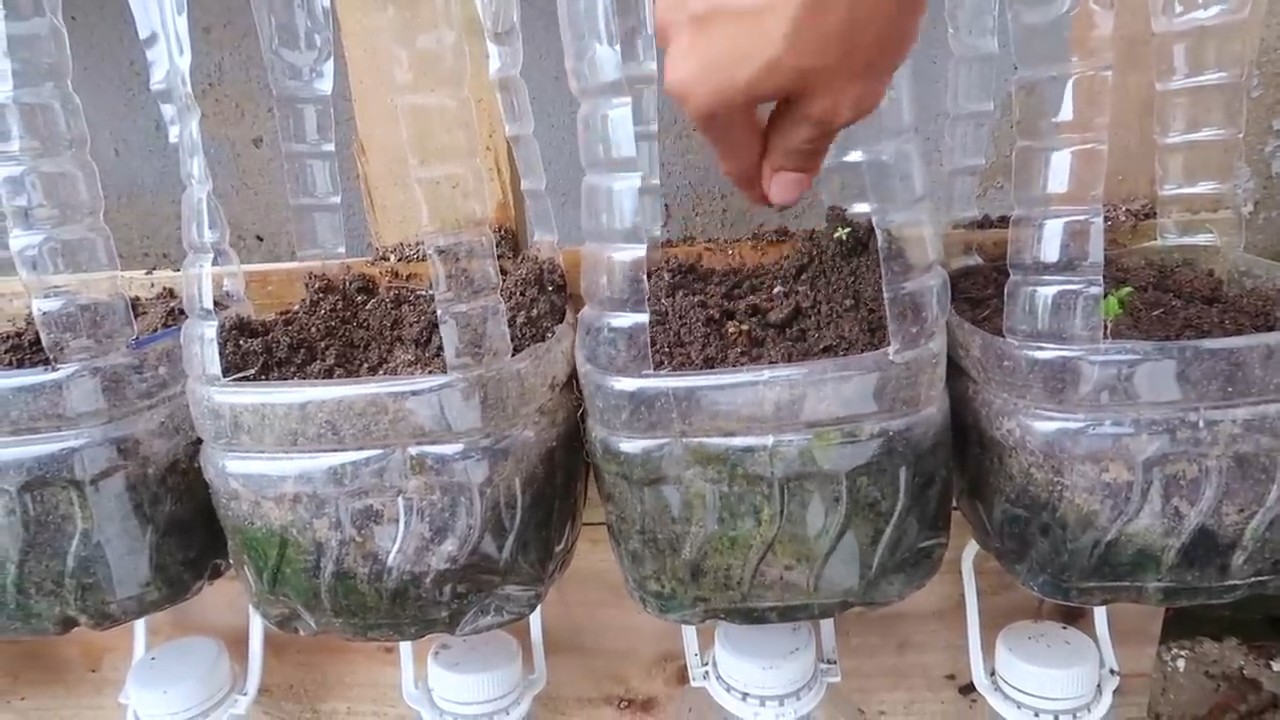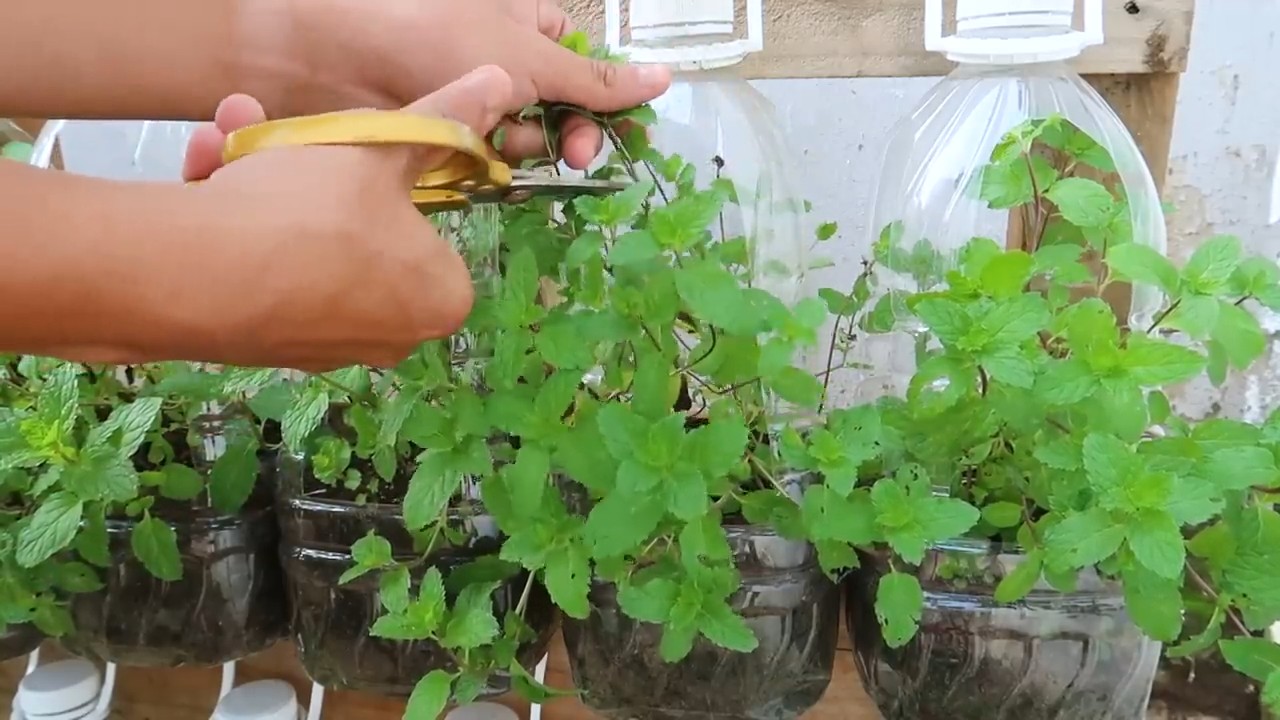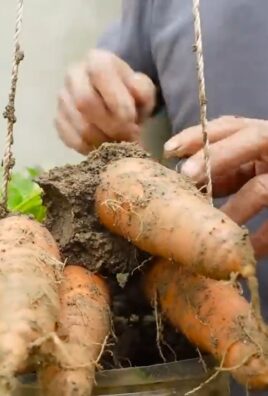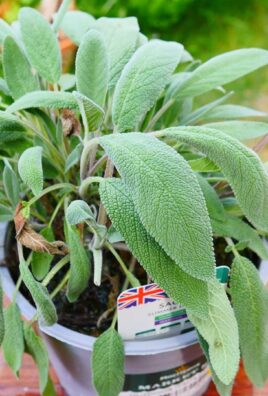Compact Mint Garden: Dreaming of fresh, fragrant mint for your mojitos, teas, and culinary creations, but short on space? You’re not alone! Many of us yearn for a thriving garden, even with limited square footage. That’s where the magic of a compact mint garden comes in. For centuries, mint has been cherished not only for its refreshing flavor but also for its medicinal properties. From ancient Egyptians using it in embalming to Romans flavoring their sauces and wines, mint boasts a rich and fascinating history.
But let’s be honest, mint can be a bit of a garden bully, spreading like wildfire and taking over everything in its path. That’s why this DIY guide is your secret weapon! I’m going to show you how to create a beautiful and contained compact mint garden, perfect for balconies, patios, or even a sunny windowsill.
Imagine stepping outside and snipping fresh mint leaves whenever you need them. No more sad, wilted bunches from the grocery store! This DIY project is not only incredibly rewarding but also surprisingly easy. Plus, it’s a fantastic way to add a touch of green to your living space and enjoy the therapeutic benefits of gardening, even in the smallest of areas. So, grab your gardening gloves, and let’s get started on creating your very own compact mint paradise!

Creating Your Own Adorable Compact Mint Garden
Hey there, fellow plant enthusiasts! I’m so excited to share this super fun and easy DIY project with you: creating your very own compact mint garden! Mint is such a versatile herb – perfect for teas, cocktails, desserts, and even savory dishes. Plus, it smells amazing! But, as many of you probably know, mint can be a bit of a… shall we say… enthusiastic grower. It spreads like wildfire if you let it loose in your garden. That’s why a compact, contained mint garden is the perfect solution. This project is perfect for beginners, apartment dwellers, or anyone who wants to keep their mint under control. Let’s get started!
What You’ll Need
Before we dive in, let’s gather all the necessary supplies. This will make the whole process smoother and more enjoyable.
* **A Container:** This is the foundation of our mint garden. You can use almost anything! I personally love using terracotta pots because they look so charming and allow the soil to breathe, but you could also use:
* A large ceramic pot
* A galvanized steel bucket
* A repurposed wooden crate (make sure it’s lined!)
* Even an old watering can!
Just make sure your container has drainage holes. Mint doesn’t like sitting in soggy soil. The size depends on how much mint you want to grow, but something at least 12 inches in diameter and 8 inches deep is a good starting point.
* **Potting Soil:** Don’t skimp on the soil! Use a good quality potting mix specifically designed for containers. This will provide the nutrients and drainage your mint needs to thrive. Avoid using garden soil, as it can compact and not drain well in containers.
* **Mint Plants:** You have two options here:
* **Starter Plants:** These are readily available at most garden centers and nurseries. You can choose from different varieties of mint, like peppermint, spearmint, chocolate mint, or even orange mint! I recommend starting with 1-3 plants, depending on the size of your container.
* **Mint Cuttings:** If you have a friend with a mint plant, you can easily propagate your own! Just take a few cuttings (about 4-6 inches long) and root them in water before planting. I’ll explain how to do this in more detail later.
* **Drainage Material (Optional):** Adding a layer of drainage material at the bottom of your container can help prevent waterlogging. You can use:
* Gravel
* Pebbles
* Broken pottery shards
* **Gardening Gloves:** Protect your hands from dirt and potential irritants.
* **Watering Can or Hose:** For watering your newly planted mint.
* **Trowel or Small Shovel:** For digging and planting.
* **Scissors or Pruning Shears:** For taking cuttings (if you’re propagating).
* **Rooting Hormone (Optional):** This can help speed up the rooting process for cuttings.
* **Spray Bottle (Optional):** For misting your mint plants.
Taking Mint Cuttings (If You’re Propagating)
If you’re opting to propagate your mint from cuttings, here’s how to do it:
1. **Choose Healthy Stems:** Select healthy, vibrant green stems from an established mint plant. Avoid stems that are woody or have flowers on them.
2. **Take the Cuttings:** Using clean scissors or pruning shears, cut the stems about 4-6 inches long, just below a leaf node (the point where leaves grow from the stem).
3. **Remove Lower Leaves:** Gently remove the leaves from the bottom 1-2 inches of the stem. This is where the roots will grow.
4. **Root in Water:** Place the cuttings in a glass or jar filled with water, making sure the bottom portion of the stems (where you removed the leaves) is submerged.
5. **Optional: Use Rooting Hormone:** Dip the cut ends of the stems in rooting hormone powder before placing them in water. This can help encourage root growth.
6. **Find a Sunny Spot:** Place the jar in a bright, indirect sunlight location. Avoid direct sunlight, which can scorch the cuttings.
7. **Change the Water Regularly:** Change the water every 1-2 days to keep it fresh and prevent bacteria growth.
8. **Wait for Roots to Develop:** Within a week or two, you should start to see small white roots emerging from the stems.
9. **Plant the Rooted Cuttings:** Once the roots are about an inch long, your cuttings are ready to be planted in your compact mint garden!
Planting Your Mint Garden
Now for the fun part – putting everything together!
1. **Prepare the Container:** If your container doesn’t already have drainage holes, drill some in the bottom. Then, if you’re using drainage material, add a layer to the bottom of the container. This will help prevent the soil from becoming waterlogged.
2. **Add Potting Soil:** Fill the container with potting soil, leaving about an inch or two of space at the top.
3. **Plant the Mint:**
* **For Starter Plants:** Gently remove the mint plants from their nursery pots. Loosen the roots slightly with your fingers. Dig small holes in the potting soil, spacing them a few inches apart. Place the mint plants in the holes and cover the roots with soil. Gently pat the soil around the plants.
* **For Rooted Cuttings:** Carefully remove the rooted cuttings from the water. Dig small holes in the potting soil, spacing them a few inches apart. Place the rooted cuttings in the holes and cover the roots with soil. Gently pat the soil around the plants.
4. **Water Thoroughly:** Water the newly planted mint garden thoroughly until water drains out of the drainage holes. This will help settle the soil and encourage root growth.
5. **Find the Perfect Spot:** Place your compact mint garden in a location that receives at least 4-6 hours of sunlight per day. Mint thrives in sunny locations, but it can also tolerate partial shade.
6. **Mulch (Optional):** Add a thin layer of mulch around the base of the plants. This will help retain moisture, suppress weeds, and keep the soil cool. You can use organic mulch like shredded bark, straw, or compost.
Caring for Your Compact Mint Garden
Now that your mint garden is planted, it’s important to provide it with the proper care to keep it healthy and thriving.
1. **Watering:** Mint likes consistently moist soil, but it doesn’t like to be waterlogged. Water your mint garden whenever the top inch of soil feels dry to the touch. Water deeply, until water drains out of the drainage holes. Avoid watering the leaves directly, as this can promote fungal diseases.
2. **Fertilizing:** Mint is a relatively low-maintenance plant, but it will benefit from occasional fertilization. Feed your mint garden with a balanced liquid fertilizer every 2-4 weeks during the growing season (spring and summer). Follow the instructions on the fertilizer label.
3. **Pruning:** Regular pruning is essential for keeping your mint garden compact and productive. Pinch off the tips of the stems regularly to encourage bushier growth. You can also harvest leaves as needed for cooking or tea.
4. **Preventing Flowering:** Mint plants will eventually produce flowers. While the flowers are pretty, they can detract from the flavor of the leaves. To prevent flowering, pinch off any flower buds as soon as you see them.
5. **Pest Control:** Mint is generally pest-resistant, but it can occasionally be affected by aphids or spider mites. If you notice any pests, you can try spraying them with insecticidal soap or neem oil.
6. **Overwintering:** In colder climates, mint plants may die back in the winter. To protect your mint garden, you can move it to a sheltered location, such as a garage or shed. You can also cover the plants with a layer of mulch to insulate them from the cold. In the spring, new growth will emerge from the roots.
7. **Repotting:** As your mint plants grow, they may eventually outgrow their container. If you notice that the roots are becoming crowded or that the plant is drying out quickly, it’s time to repot it into a larger container.
Harvesting Your Mint
One of the best parts of having a mint garden is being able to harvest fresh mint whenever you need it!
1. **Harvesting Leaves:** To harvest mint leaves, simply pinch or cut off the stems just above a leaf node. You can harvest as much or as little as you need.
2. **Best Time to Harvest:** The best time to harvest mint is in the morning, after the dew has dried but before the sun gets too hot. This is when the leaves are at their most flavorful.
3. **Using Fresh Mint:** Fresh mint leaves can be used in a variety of ways, including:
* Making tea
* Flavoring cocktails
* Adding to salads
* Garnishing desserts

Conclusion
So, there you have it! Creating your own compact mint garden is not just a fun project; it’s a game-changer for anyone who loves fresh, vibrant flavors at their fingertips. We’ve walked you through the simple steps, highlighting how easy it is to cultivate your own supply of this versatile herb, even if you’re short on space. Forget those sad, wilted bunches from the grocery store – imagine the burst of fresh mint in your mojitos, teas, salads, and desserts, all grown with your own two hands.
This DIY project is a must-try because it offers so much more than just convenience. It’s about connecting with nature, even in a small way. It’s about reducing your reliance on store-bought herbs, which often come with a hefty price tag and questionable freshness. And it’s about adding a touch of green beauty to your home, whether you choose to place your compact mint garden on a sunny windowsill, a balcony, or even a small patio.
But the beauty of this project lies in its adaptability. Feel free to experiment with different varieties of mint. Peppermint, spearmint, chocolate mint, even orange mint – the possibilities are endless! Consider using different types of containers, from repurposed teacups to stylish terracotta pots. You can even create a tiered mint garden for a visually stunning display.
Don’t be afraid to get creative with your soil mix. Adding a bit of compost or worm castings can give your mint plants an extra boost. And remember to adjust your watering schedule based on the weather and the type of container you’re using.
We’re confident that you’ll find this project incredibly rewarding. Not only will you have a constant supply of fresh mint, but you’ll also experience the joy of nurturing something from seed (or seedling) to harvest.
So, what are you waiting for? Gather your supplies, follow our simple steps, and embark on your own compact mint garden adventure today! We can’t wait to hear about your experiences. Share your photos, tips, and tricks in the comments below. Let’s create a community of mint-loving gardeners! Let us know what variations you tried and what worked best for you. Did you find a particularly effective way to control the spread of your mint? Did you discover a unique use for your homegrown mint? Your insights could help other readers achieve even greater success with their own compact mint gardens.
Remember, gardening is a journey, not a destination. There will be successes and setbacks along the way. But with a little patience and persistence, you’ll be enjoying the fresh, vibrant flavor of homegrown mint in no time. And who knows, you might even inspire others to start their own compact mint gardens!
Ready to transform your culinary creations with the freshest mint imaginable?
Don’t delay, start your compact mint garden today!
Frequently Asked Questions (FAQ)
Why should I grow mint in a container instead of directly in the ground?
Mint is notorious for its invasive nature. If planted directly in the ground, it can quickly spread and take over your entire garden. Its roots, called rhizomes, spread aggressively underground, sending up new shoots everywhere. Containing mint in a pot or other container prevents this uncontrolled spread, allowing you to enjoy its benefits without the headache of constant weeding and unwanted growth. A compact mint garden is the perfect solution for controlling this vigorous herb.
What kind of container is best for growing mint?
Almost any container with drainage holes will work for growing mint. Terracotta pots, plastic pots, ceramic pots, even repurposed containers like buckets or tubs are all suitable options. The size of the container will depend on how much mint you want to grow, but a pot that is at least 6-8 inches in diameter and depth is a good starting point. Make sure the container is made of a material that won’t leach harmful chemicals into the soil.
What type of soil should I use for my compact mint garden?
Mint thrives in well-draining soil that is rich in organic matter. A good potting mix specifically formulated for herbs or vegetables is ideal. You can also create your own soil mix by combining equal parts of potting soil, compost, and perlite or vermiculite. The compost will provide nutrients, while the perlite or vermiculite will improve drainage and aeration. Avoid using garden soil, as it can be too heavy and compact for container gardening.
How much sunlight does mint need?
Mint prefers partial shade, especially during the hottest part of the day. While it can tolerate full sun, the leaves may become scorched or stressed in intense heat. Aim for at least 4-6 hours of sunlight per day, ideally in the morning or late afternoon. If you’re growing your mint indoors, place it near a sunny window or supplement with a grow light.
How often should I water my mint plant?
Mint likes to be kept consistently moist, but not waterlogged. Water thoroughly when the top inch of soil feels dry to the touch. The frequency of watering will depend on the weather, the type of container you’re using, and the humidity levels. In hot, dry weather, you may need to water daily. In cooler, more humid weather, you can water less frequently. Be sure to check the soil moisture regularly to avoid overwatering or underwatering.
How do I harvest mint?
You can harvest mint leaves at any time during the growing season. Simply pinch or cut off the stems just above a leaf node. This will encourage the plant to branch out and produce more leaves. For the best flavor, harvest mint in the morning, after the dew has dried. You can use the fresh mint leaves immediately or dry them for later use.
How do I dry mint?
There are several ways to dry mint. One method is to tie the stems together in small bundles and hang them upside down in a cool, dry, well-ventilated place. Another method is to spread the leaves out on a screen or baking sheet and let them air dry. You can also use a dehydrator to dry mint quickly. Once the leaves are completely dry, store them in an airtight container in a cool, dark place.
How do I propagate mint?
Mint is very easy to propagate from stem cuttings. Simply cut off a 4-6 inch stem from a healthy plant, remove the lower leaves, and place the stem in a glass of water. Roots will typically develop within a week or two. Once the roots are about an inch long, you can plant the cutting in a pot of soil. You can also propagate mint by dividing the roots of an established plant.
My mint plant is getting leggy. What should I do?
Leggy growth in mint is often caused by insufficient light. Move your plant to a sunnier location or supplement with a grow light. You can also prune back the leggy stems to encourage bushier growth. Regular harvesting will also help to keep your mint plant compact and full.
How do I prevent my mint from flowering?
Flowering can sometimes diminish the flavor of mint leaves. To prevent flowering, pinch off any flower buds as soon as you see them. Regular harvesting will also help to prevent flowering.
Can I grow different varieties of mint together in the same container?
While it’s possible to grow different varieties of mint together, it’s generally not recommended. Mint varieties can cross-pollinate, which can result in unpredictable flavors and growth habits. It’s best to grow each variety of mint in its own separate container to maintain its unique characteristics.
Is mint safe for pets?
While mint is generally considered safe for pets in small quantities, it’s best to consult with your veterinarian before giving mint to your pet. Some varieties of mint, such as pennyroyal, can be toxic to pets. Even safe varieties of mint can cause digestive upset if consumed in large amounts.
What are some common uses for fresh mint?
Fresh mint is incredibly versatile and can be used in a wide variety of culinary applications. It’s a classic ingredient in mojitos, mint juleps, and other cocktails. It can also be used to flavor teas, lemonades, and other beverages. Mint is a delicious addition to salads, soups, and sauces. It pairs well with lamb, chicken, and fish. And it’s a popular ingredient in desserts like ice cream, chocolate, and fruit salads. The possibilities are endless!





Leave a Comment